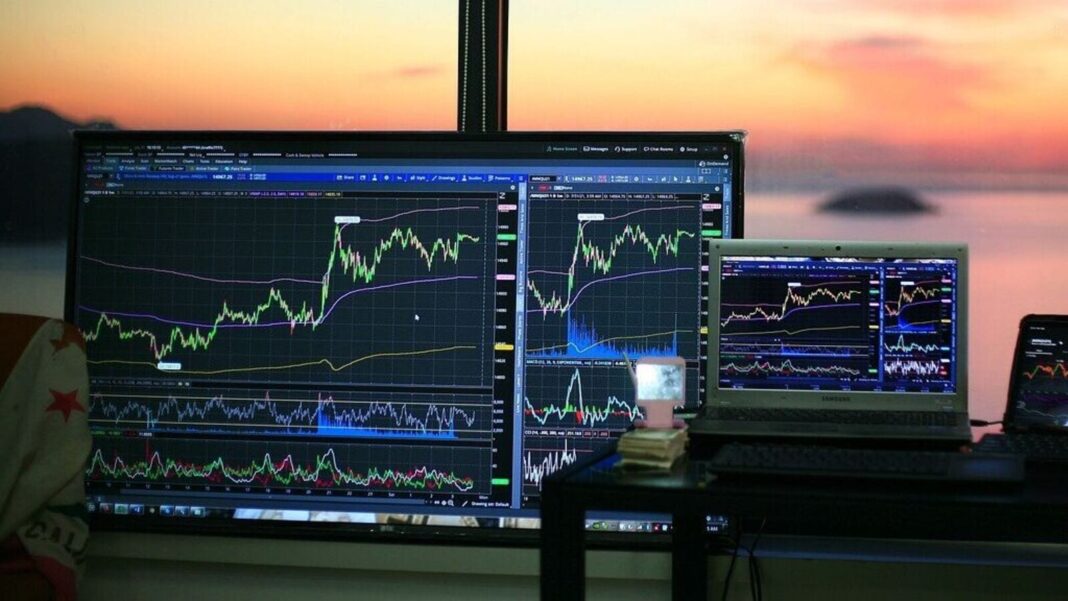In this scenario, passive investments, particularly index funds and ETFs, offer a reliable approach to managing risks, providing diversification, lower costs, and market-matching returns.
Tracking indices like Nifty 50 or Sensex allows these funds to spread investments across multiple stocks and sectors, reducing the risks tied to a single company’s performance.
“With lower fees and efficient tracking of overall market performance, they are a relatively safe choice, particularly in volatile markets,” said Chintan Haria, principal investment strategy at ICICI Prudential AMC. In today’s landscape of global inflation concerns, fluctuating interest rates, and occasional market volatility, index funds and ETFs present a relatively better investment avenue for less informed investors who are investing in direct equities, he said.
“Investing in index funds and ETFs eliminates the probability of underperformance,” said Pratik Oswal, chief of business passive funds at Motilal Oswal AMC. He noted that investors are now diversifying beyond the traditional Nifty 50 and Sensex, moving into midcap indices and the Nifty 500.
In India, indices such as Nifty 50, BSE Sensex, Nifty Next 50, and Nifty 500 consistently attract the highest investor interest. Nifty 50 and BSE Sensex are especially favored for representing the largest, most liquid companies, making them key benchmarks for market performance.
Unlike before, demand is now more broad-based and no longer dominated by institutional investors, Oswal said. In fact, over the past few years, retail investors have increasingly embraced passive investing. At Motilal Oswal AMC, the passive investment landscape is largely driven by retail and HNI clients, he added.
Assets under management (AUM) of ETFs in India has skyrocketed over 15-fold, reaching ₹7.78 trillion by the quarter ended June 2024, up from ₹50,211 crore in the March quarter of 2017. Meanwhile, index funds have seen an astonishing 99-fold surge, growing to ₹2.43 trillion from just ₹2,452 crore during the same period, showed the April-June quarterly update by NSE.
Also Read: Passive fund investments: Tracking the divergence in risk versus return
“What typically draws investors to passive funds is their simplicity & lower expense ratio compared to active funds,” pointed out Vishal Jain, CEO of Zerodha Fund House. He pointed out that passive funds generally have an expense ratio ranging from 0.05% to 0.30% per annum, significantly lower than the 0.75% to 1.25% per annum charged by actively managed funds.
The expense ratio is the annual fee that funds charge investors to cover management and operational costs. It’s a percentage of the investment. Lower expense ratios, like those found in passive funds, reduce the cost of investing and can improve overall returns over time.
The risk-return trade-off
Unlike active funds chasing alpha, index funds sidestep the uncertainty of stock picking and timing the market. Their reliability and cost-effectiveness make them an appealing option for long-term investors looking for steady growth and a balanced risk-return profile. Alpha means an investment strategy’s ability to outperform the market. It is also known as excess return, representing the abnormal gains compared to a benchmark after adjusting for risk.
“Index funds and ETFs provide steady returns over the long term, closely tracking the performance of their underlying indices,” said D.P. Singh, deputy MD & joint CEO, SBI MF. The return potential depends on the overall growth of the market or sector they represent, making them an attractive choice for investors who believe in the long-term growth story of the economy, he said.
Meanwhile, sector-specific ETFs, like Nifty Bank or Nifty IT, have shown the potential for higher returns during sector bull runs. However, these come with increased risk, as they are more exposed to specific market dynamics. For example, when the banking sector performs well, the Nifty Bank ETF can deliver robust returns, but it may also face sharper declines in weaker market conditions, he explained.
On the other hand, smart beta or factor-based indices, such as the Nifty 50 Equal Weight or Nifty Low Volatility 30, offer alternative ways to generate returns. These indices focus on specific factors like quality, momentum, or equal weight, aiming to enhance returns or reduce risk compared to traditional market-cap-weighted indices, Singh said.
Sharwan Kumar Goyal, fund manager and head of passive, arbitrage and quant strategies at UTI AMC explained that the broad market capitalization-based index funds like the ones replicating Nifty 50, Sensex, are preferred by new investors, who are just beginning their journey in equity investments or for investors who have relatively lower risk appetite and want to add equity exposure to their portfolios.
Meanwhile, smart beta and thematic or sectoral strategies, which offer relatively higher returns potential but come with higher risks, attract sophisticated and seasoned investors who are looking for something beyond broad market cap-based strategies. ETFs, on the other hand, have been preferred by institutional investors and large investors, he added.
“Risk-return in passive investing can vary greatly depending on the specific index fund or ETF one chooses,” said Arun Sundaresan, head of ETF at Nippon Life India Asset Management. When investing in index funds or ETFs, investors can directly choose which the market they want exposure to, unlike active investing where a fund manager’s strategy may shift or evolve over time.
Where is passive investing booming?
Sundaresan noted that institutional investors, large family offices, wealth management firms like banks, and HNIs are the dominant players investing in index funds and ETFs.
He also highlighted the rising popularity of gold and silver ETFs. In the index fund space, smart beta or strategy funds—like momentum, value, and volatility—are gaining traction. Passive investing is also expanding through thematic and sectoral funds, including those focused on defence, banking, IT, and manufacturing, he added.
Also Read | How Sebi’s new category of passive hybrid funds helps investors




